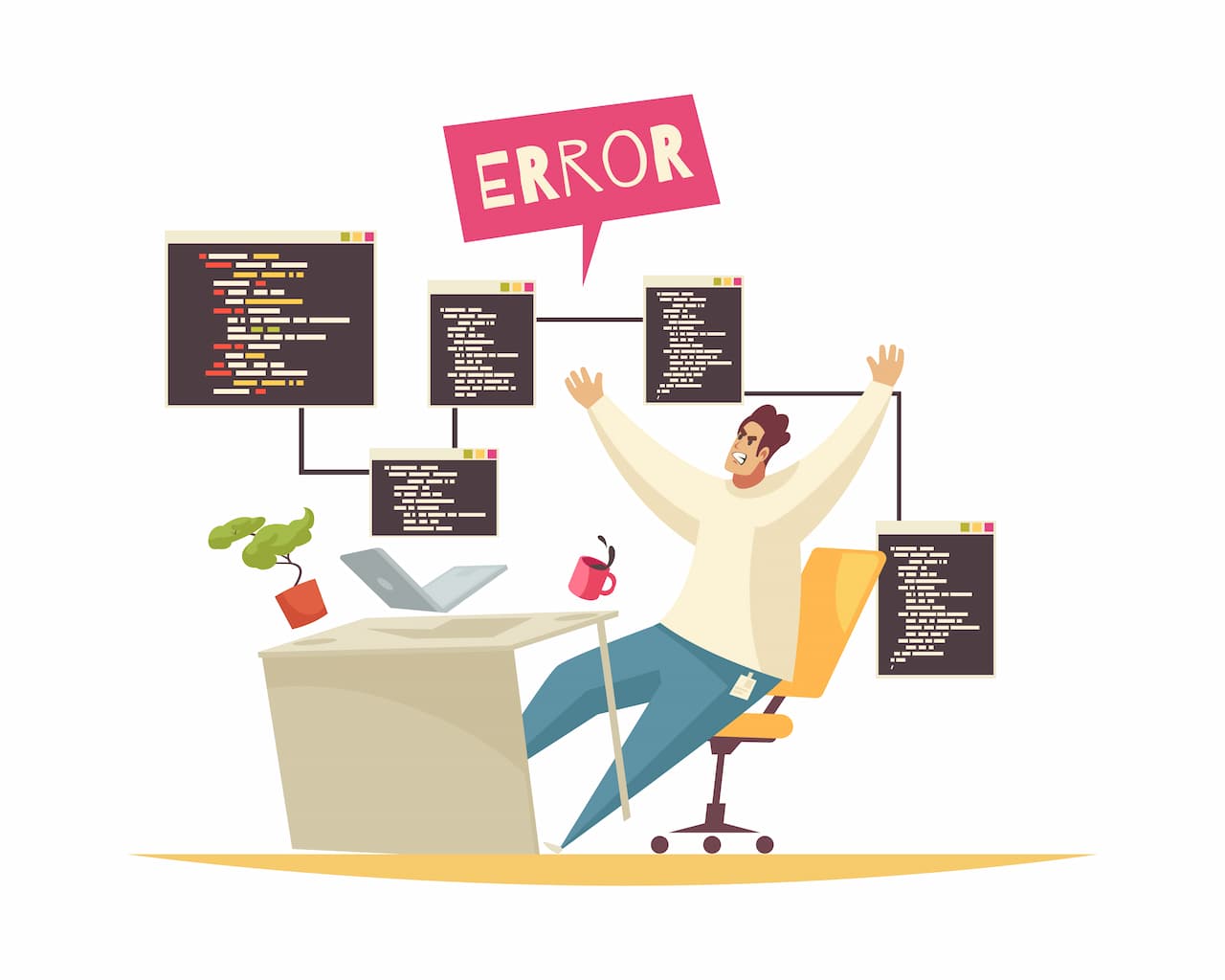
7 Crucial Game Localization Mistakes that You Should Avoid
Entering a new gaming industry market through game localization isn't without mistakes. Interestingly, many game publishers experience similar game localization mistakes that are everyone's problems. The mistakes vary from just a mere issue to a significant one that could possibly lead to failure.
Talking about game localization, it is making a video game sound as if it's originally made in the target language.
It goes beyond translation but also localizes the game elements, in-game content, and voice-over to appeal to the target language and culture. In this article, we will discuss 7 common game localization errors that every game publisher should avoid. If you want a successful game localization, you should consider these localization problems and how to avoid them.
1. Lack of Contextual Information
Inadequate translations can ruin the gaming experience and lead to negative reviews and poor sales. This happens when a game localization agency doesn't give enough contextual information to the translators. They need to understand the context of a dialogue, a quest, or a character's backstory to provide accurate and meaningful translations.
Without enough context, translations may lack depth and nuance, leading to a loss of immersion for players in the target language. For example, players might start going to a forbidden place and wonder why they are losing the game.
The company and developers should share background information about the game's world, characters, and storylines. Providing context helps translators make informed decisions about language choices to appeal to a certain culture and ensures that the narrative remains coherent and engaging after localization.
2. Ignoring Cultural Nuances and Regional Preferences
The world of video games is unique to each culture and region. Thus, neglecting the significance of cultural nuances and regional preferences is like preparing your game localization to fail. The entire game should be appealing to suit the cultural preferences and sensitivities of the target audience.
Failure to do so can lead to unintended consequences, including alienating players, causing offense, or even getting restrictions from the local authorities. Regional preferences are also another thing that every game localization company pays attention to.
Not all players in a particular language group have the same gaming preferences. Regional differences in language, culture, and gaming habits can be significant. Assuming that one localized version will work for all players who speak the same language is a costly mistake. For example, you shouldn’t reuse the translations of European Portuguese for Brazilian Portuguese.
Working with local consultants or translators would be the best solution for this game localization mistake. Provide them with enough context, so they can share valuable insights for the game localization process. It is also recommended to hire translators who are game savvy for a better understanding of the players’ preferences.
Further, developers can offer customization options in their games to cater to regional preferences. For example, allowing players to choose between American and British English, or offering different control schemes to match regional gaming habits, can greatly enhance the gaming experience.
Read also: Impact of Bandai Namco in Gaming Culture
3. Skip User Testing

User testing is an indispensable part of game development, and it's just as crucial in the localization process. Failure to do usability testing would be an expensive game localization mistake that game publishers might go through. Localizing games in some different languages needs separate testing. The one-size-fits-all situation strategy won't work here.
Having user testing is important to avoid localization problems like a host of problems, functional issues, awkward translations, and a lack of cultural resonance. For example, skipping user testing on the device that local gamers use might run into UI issues and affect players' experience, such as a long translated text that would affect the visual layout.
Game publishers should also engage in thorough playtesting with local players. It can provide valuable feedback on all aspects of the game, from language and user interface to gameplay and cultural appropriateness. This feedback helps identify and rectify issues before the game's release, saving both time and reputation.
4. Making Budget Cuts

Budget constraints are often a reality in the world of game development, but making cuts in the localization budget can be a significant mistake. In order to tap into a new market and reach a wider audience, a high-quality localization is important to make the appealing to local players.
Different strategy comes with different pricing. But choosing to implement a free-budget one would be questionable in terms of the quality. This might be a safe choice for a short-term period but a disaster in the long run. Game localization is not an area where developers should skimp, as it can have a direct impact on the game's success in international markets.
Cutting the localization budget can lead to reduced quality in translation, a lack of cultural adaptation, and limited resources for user testing and context provision. This, in turn, can result in a subpar gaming experience for players in the target regions.
Game publishers should allocate an appropriate budget for localization to ensure a high-quality, immersive, and culturally sensitive gaming experience for all players.
5. Embedding Text into Core Files

If you want to know the overall game localization process, the most comprehensive yet straightforward method is to "separate your text and strings from your code." Another critical game localization mistake is embedding text directly into core game files.
This practice can make localization a cumbersome and time-consuming process, as it requires modifying the core code and files for each language version. It not only increases the risk of introducing bugs but also makes updates and patches more challenging to implement.
Software maintenance would be another challenging task if you do this practice. The fact is that a string may appear in multiple sections of the code. Consequently, any change made to a particular string needs modifications in all of the occurrences, adding complexity to the developer's task.
Aside from the technical side, this practice would burden the translators as they need to scan the whole document and find texts that should be translated. To avoid this mistake, developers should use external files or databases to store in-game text and assets.
That approach makes it easier to update and expand the game's content for different languages without changing the core code. Additionally, it simplifies the localization process, allowing translators to work on text without the need for programming expertise.
Read also: Translating Game Text: Maintaining Immersion and Player Experience
6. Timing Localization as an Afterthought
The next game localization mistake that many fail to deliver is assuming that localization is part of the final step. Localization should not be an afterthought. Instead, it should be an integral part of the game development process from the beginning.
It’s common for many developers and game publishers to ask how long it takes to localize a game and plan to do it at the final phase. Waiting until a game is almost complete before starting the localization process is a costly and inefficient approach.
Game publishers should plan for localization at the outset of game development. This includes creating a localization-friendly codebase, designing the user interface with text expansion in mind, crafting a narrative that can be easily adapted for different cultures, and providing translators with necessary contextual information.
Integrating localization early in the development cycle can help streamline the process and release the game more quickly in multiple markets.
7. Hiring Wrong Translators

It’s quite easy to find translators who can translate words from the source language to the targeted one. But, finding one who is game-savvy and understands the culture you are going to localize your game into is another challenging thing.
Some game publishers make the error of selecting translators solely based on their language proficiency, overlooking the importance of domain expertise and cultural understanding. Therefore, it’s risky to hire the wrong translator for the game localization project.
Different game genres need different people to translate the game. For example, research-oriented content needs someone who is an expert in gaming terminologies and slang. Meanwhile. creativity-oriented context looks for translators who can think outside the box to provide valuable translations about gaming concepts. Either way, having translators who are also game-savvy would be helpful.
Translators who are gamers themselves or have prior experience in video game localization are often better equipped to capture the essence and nuances of the game. Moreover, they should be culturally sensitive and capable of navigating the intricacies of the target market.
Unveil the Global Market with Video Game Localization
Game localization is a multifaceted and intricate process that requires careful consideration of cultural, linguistic, regional, and contextual factors. Avoiding the crucial game localization mistakes mentioned in this article can significantly improve the chances of a game's success in international markets.
In the end, localization is an investment that can lead to increased sales, positive reviews, and a broader player base, making it a vital component of the modern gaming industry. Never put game localization as a final step or even a later consideration if you want to tap into the global market.
Working with an experienced game translation agency like Digital-Trans Asia will help provide better localization. With a commitment to preserving the essence of your game, while making it accessible to a worldwide audience, we take a holistic approach to game localization. Contact us via email at @digital-trans.asia for further inquiries. Let’s unveil the global market with us!
Read also: What is Localization Quality Assurance? Why Is It Important?